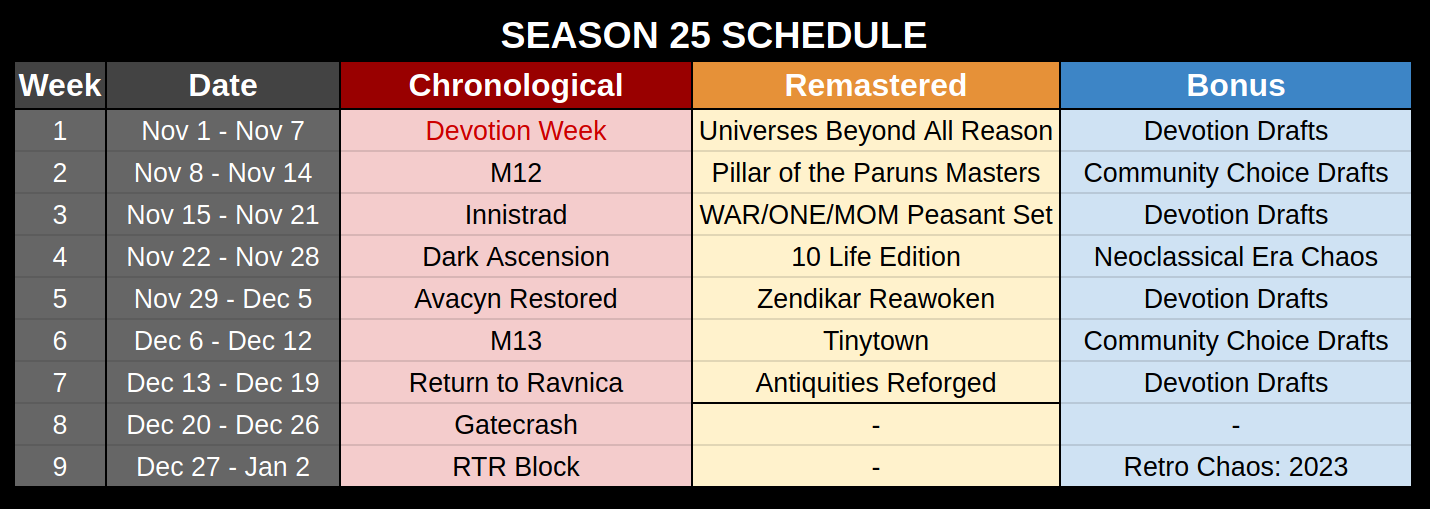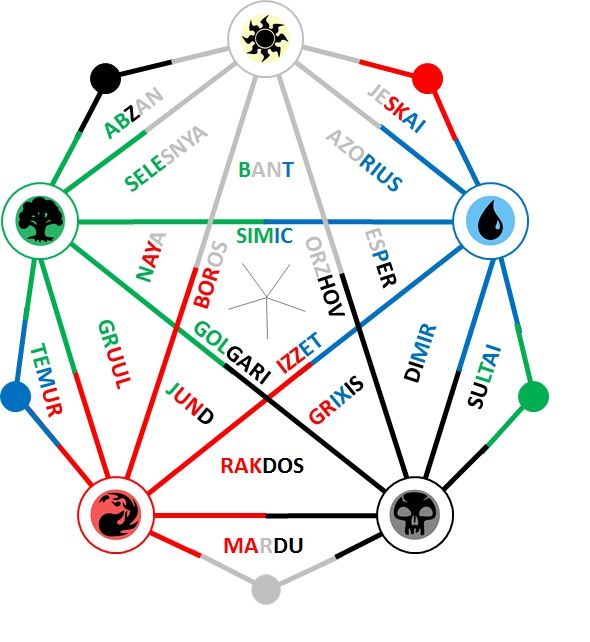Forge not only has all the decks with their original printings but also has the capability to play against the AI.
counterspell
You can either go here https://mtg.wtf/deck Or the same data is also exported to mtgjson if you want it in JSON format https://mtgjson.com/ The same data is also available in a few other export formats.
Source data for it is in https://github.com/taw/magic-preconstructed-decks with source URLs for every deck (some of these expired by now and you'd need to go to the Web Archive - WotC redesigns its website every few years, killing old URLs).
Inferring exact set and collector number based on all available information is done algorithmically.
Everything should have correct names, quantities, and set codes.
A few cards won't have correct collector numbers. The list of cards which are generally expected to not have exact collector number: "Plains", "Island", "Swamp", "Mountain", "Forest", "Wastes", "Azorius Guildgate", "Boros Guildgate", "Dimir Guildgate", "Golgari Guildgate", "Gruul Guildgate", "Izzet Guildgate", "Orzhov Guildgate", "Rakdos Guildgate", "Selesnya Guildgate", "Simic Guildgate"
For everything else, the algorithm is exact as far as we know. Anything the algorithm can't detect automatically it flags, and we resolve it manually.
I noticed that the default deck download format on the website doesn't include set code and collector number information.
If you're fine with JSON, you can use mtgjson, or this file: https://raw.githubusercontent.com/taw/magic-preconstructed-decks-data/master/decks_v2.json (which is exported to mtgjson).
In case it matters, collector numbers are Gatherer-style not Scryfall-style (so DFCs are 123a / 123b, not 123 etc.). This only really affects cards with multiple parts.
Do you have any more questions?
You can download the .txt file for each decklist from MTGGoldfish by clicking on the "Download > Exact Card Versions (Tabletop)" button. However, please note that these files may not be compatible with Xmage due to differences in formatting. Nonetheless, creating a conversion script should not be too difficult.
mtg
Magic the Gathering scripts.
scripts
analyze_deck_colors- reports colors of the deck according to correct algorithm [ http://t-a-w.blogspot.com/2013/03/simple-and-correct-algorithm-for.html ]clean_up_decklist- clean up manually created decklistcod2dck- convert Cockatrice's .cod to XMage's .dckcod2txt- convert Cockatrice's .cod to .txt formattxt2cod- convert plaintext deck formats to Cockatrice's codtxt2dck- convert plaintext deck format to XMagetxt2txt- convert plaintext deck format to plaintext deck format (i.e. normalize the decklist)url2cod- download decklists from URL and convert to .cod (a few popular websites supported)url2dck- download decklists from URL and convert to XMage .dck formaturl2txt- download decklists from URL and convert to .txt formatdata management
These are used to generate data in
data/, you probably won't need to run them yourself
generate_colors_tsv_mtgjson- generatedata/colors.tsvfrom mtgjson's AllSets-x.json (recommended)generate_colors_tsv_cockatrice- generatedata/colors.tsvfrom cockatrice's cards.xml (use mtgjson instead)mage_card_map_generator- generatedata/mage_cards.txt
Here are step-by-step instructions to migrate decks_v2.json to .dck files with the desired structure, assuming no prior knowledge of the command line:
- Open a web browser and go to the following link: https://github.com/taw/magic-preconstructed-decks
- Click the green "Code" button and select "Download ZIP" to download the repository as a ZIP file.
- Extract the ZIP file to a folder on your computer.
- Open the folder and create a new file
migrate_decks.py. - Right-click on the file and select "Open With" and then choose a text editor such as Notepad or Sublime Text.
- Copy the following Python script and paste it into the text editor:
import json
import os
import re
from typing import List, Dict
DECKS_FOLDER = 'Preconstructed Decks'
def load_decks(file_path: str) -> List[Dict]:
with open(file_path, 'r') as f:
return json.load(f)
def format_deck_name(name: str) -> str:
name = name.lower().replace(' ', '_').replace('-', '_')
return re.sub(r'[^a-z0-9_]', '', name)
def get_deck_info(deck: Dict) -> Dict:
return {
'name': format_deck_name(deck['name']),
'type': deck['type'],
'set_code': deck['set_code'].upper(),
'set_name': deck['set_name'],
'release_date': deck['release_date'],
'deck_folder': DECKS_FOLDER,
'cards': deck['cards'],
'sideboard': deck['sideboard']
}
def build_deck_text(deck_info: Dict) -> str:
lines = [
f'// {deck_info["name"]}',
f'// Set: {deck_info["set_name"]} ({deck_info["set_code"]})',
f'// Release Date: {deck_info["release_date"]}',
'',
]
for card in deck_info['cards']:
lines.append(f'{card["count"]} [{card["set_code"]}:{card["number"]}] {card["name"]}')
lines.append('')
lines.append('SB:')
for card in deck_info['sideboard']:
lines.append(f'{card["count"]} [{card["set_code"]}:{card["number"]}] {card["name"]}')
return '\n'.join(lines)
def build_deck_path(deck_info: Dict) -> str:
return os.path.join(deck_info['deck_folder'],
deck_info['type'],
deck_info['set_code'])
def write_deck_file(deck_info: Dict, deck_text: str) -> None:
deck_path = build_deck_path(deck_info)
os.makedirs(deck_path, exist_ok=True)
filename = f"{deck_info['name']}.dck"
file_path = os.path.join(deck_path, filename)
with open(file_path, 'w') as f:
f.write(deck_text)
def migrate_decks(input_file: str, error_file: str) -> None:
decks = load_decks(input_file)
error_decks: List[Dict] = []
for deck in decks:
try:
deck_info = get_deck_info(deck)
deck_text = build_deck_text(deck_info)
write_deck_file(deck_info, deck_text)
except KeyError:
error_decks.append(deck)
if error_decks:
with open(error_file, 'w') as f:
json.dump(error_decks, f)
if __name__ == '__main__':
migrate_decks('decks_v2.json', 'error_decks.json')
- Open a terminal or command prompt on your computer. On Windows, you can do this by pressing the Windows key and typing "cmd" and then pressing Enter.
- Navigate to the folder where the
decks_v2.jsonfile and themigrate_decks.pyfile are located. You can do this by typingcdfollowed by the path to the folder, such ascd C:\Users\YourName\Downloads\magic-preconstructed-decks-master. - Type
python migrate_decks.pyand press Enter to run the Python script. - Wait for the script to finish running. It will create a
.dckfile for each deck in thedecks_v2.jsonfile, with the desired structure.
Note: If you don't have Python installed on your computer, you can download it from the official website: https://www.python.org/downloads/. Choose the latest version for your operating system and follow the installation instructions.
https://github.com/taw/magic-preconstructed-decks-data
This repository contains machine readable decklist data generated from:
Files
decks.jsonhas traditional cards + sideboard structure, with commanders reusing sideboard.
decks_v2.jsonhas cards + sideboard + commander structure. You should use this one.Data format
Data file i a JSON array, with every element representing one deck.
Fields for each deck:
- name - deck name
- type - deck type
- set_code - mtgjson set code
- set_name - set name
- release_date - deck release date (many decks are released much after their set)
- cards - list of cards in the deck's mainboard
- sideboard - list of cards in the deck's sideboard
- commander - any commanders deck has (can be multiple for partners)
Each card is:
- name - card name
- set_code - mtgjson set card is from (decks often have cards from multiple sets)
- number - card collector number
- foil - is this a foil version
- count - how many of given card
- mtgjson_uuid - mtgjson uuid
- multiverseid - Gatherer multiverseid of card if cards is on Gatherer (optional field)
Data Limitations
All precons ever released by Wizards of the Coast should be present, and decklists should always contain right cards, with correct number and foiling, and mainboard/sideboard/commander status.
Source decklists generally do not say which printing (set and card number) each card is from, so we need to use heuristics to figure that out.
We use a script to infer most likely set for each card based on some heuristics, and as far as I know, it always matches perfectly.
That just leaves situation where there are multiple printings of same card in same set.
If some of the printings are special (full art basics, Jumpstart basics, showcase frames etc.), these have been manually chosen to match every product.
If you see any errors for anything mentioned above, please report them, so they can be fixed.
That just leaves the case of multiple non-special printings of same card in same set - most commonly basic lands. In such case one of them is chosen arbitrarily, even though in reality a core set deck with 16 Forests would likely have 4 of each Forest in that core set, not 16 of one of them.
Feel free to create issue with data on exact priting if you want, but realistically we'll never get them all, and it's not something most people care about much.
tappedout exports as csv with set information:
.csv
Board,Qty,Name,Printing,Foil,Alter,Signed,Condition,Language
main,1,Beacon Bolt,GRN,,,,,
.dck
1 [GRN:?] Beacon Bolt
Here is a Python script that reads the .csv file and writes the required format to a .dck file. This script uses the csv module to read the .csv file and write to the .dck file.
import csv
def read_csv_file(file_path):
with open(file_path, 'r') as file:
return list(csv.reader(file))
def write_to_dck_file(file_path, data):
with open(file_path, 'w') as file:
file.writelines(data)
def convert_csv_to_dck_format(csv_data):
csv_header, *csv_rows = csv_data
return [format_dck_line(row) for row in csv_rows]
def format_dck_line(row):
quantity, name, printing = row[1], row[2], row[3]
return f"{quantity} [{printing}:?] {name}\n"
csv_data = read_csv_file('input.csv')
dck_data = convert_csv_to_dck_format(csv_data)
write_to_dck_file('output.dck', dck_data)
This script works as follows:
- It opens the .csv file in read mode.
- It creates a csv reader object to read the .csv file.
- It skips the header row using the
next()function. - It opens the .dck file in write mode.
- For each row in the .csv file, it formats the line as per the .dck file format. The format is "Quantity [Printing:?] Name". Here, Quantity is the second column in the .csv file, Printing is the fourth column, and Name is the third column.
- It writes the formatted line to the .dck file.
Please replace 'input.csv' with the path to your .csv file and 'output.dck' with the path where you want to create the .dck file. Run this script in a Python environment, and it will create the .dck file with the required format.
Manabox has a list of all precon lists and exports in "n cardname (set)set#" format
I was thinking just a few days ago how I wish I was playing Magic: The Gathering when some sets were released to play Limited with those sets. Seems like I've found just what I wanted.
A Flashback Draft is a limited-time event on Magic Online where players can draft and play with sets from the past. The sets available for Flashback Drafts change regularly, and Wizards of the Coast does not publish a schedule for them. However, players can stay up to date on upcoming Flashback Drafts by checking the Magic Online website or following Magic Online's social media accounts. Flashback Drafts are a popular way for players to experience sets that they may have missed or to revisit sets that they enjoyed in the past. The entry fee for Flashback Drafts varies depending on the set and the type of draft league, but players can typically use event tickets or play points to enter.
Flashback Format
-
Inspired by the MTGO Flashback Drafts, but for constructed play
-
Minimum deck size: 60 cards
-
No more than 4 copies of any card, except basic lands
-
Cards can be of any rarity
-
The legal card pool changes every month, based on a randomly selected block from Magic's history
-
You can only use cards from the chosen block, and only from the sets that were released at that point in time
-
For example, if the block is Innistrad, you can use cards from Innistrad, Dark Ascension, and Avacyn Restored, but not from Shadows over Innistrad or Eldritch Moon
-
Additionally, you can only use cards that cost less than $1 according to Scryfall's market price
-
This format lets you revisit old sets and experience different eras of Magic with a budget-friendly twist
-
It challenges you to adapt to changing metagames and discover new synergies with limited card choices




Are you answering to the right post?